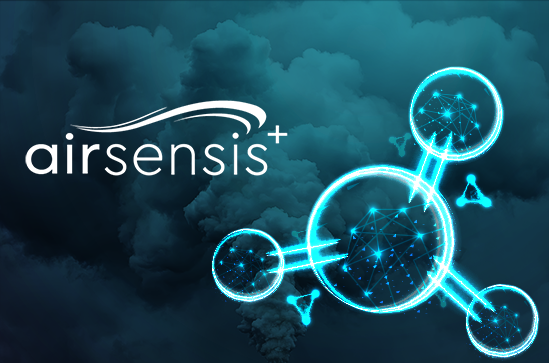
The Innovation of AirSensisPlus
AirSensis Plus is a cutting-edge IoT multi-functional system engineered for gathering environmental air quality data and delivering actionable insights. This innovative system operates autonomously, focusing on both quantitative and qualitative data analysis. It collects data from both indoor or outdoor environments. Building upon extensive research and the knowledge gained from previous generation AirSensis products, the new iteration boasts additional sensors for enhanced qualitative measurements. Users can access real-time air quality data and AirSensis indexes through the AirSensis Plus website.
AirSensis Plus sensors
AirSensis Plus measures the concentration of the mass of particles (PM2.5), ozone (Ο3), carbon dioxide (CO2) and nitrogen oxides (NOx). Additionally the environmental parameters being measured are the relative humidity, temperature, and ultraviolet radiation.
Each AirSensis Plus sensor has been tested on the most extreme conditions inside the lab and in realistic conditions of outdoor and indoor spaces.
AirSensis Plus takes advantage of a range of foolproof sensor technologies.
AirSensis Plus contains a laser scattering sensor, an ultraviolet sensor, a MEMS gas detection microsystem, MEMS thermal sensors, MEMS humidity sensors and a thermal analog sensor. Based on the vast experience of the lab scientists and the data analysts of the project AirSensis Plus systems provide the most accurately scientific measurements and thus reliable air quality indexes.
What is laser scattering technology?
Laser scattering technology involves the use of lasers to analyze the scattering of light by aerosol particles.
What is MEMS technology?
MEMS stands for Micro-Electro-Mechanical Systems. It refers to the integration of mechanical elements, sensors, and other electronics on a microfabricated system usually on the scale of micrometers or millimeters.
What is ultraviolent technology?
Ultraviolet (UV) technology here refers to the use of electromagnetic radiation with smaller wavelengths than those of visible light, but longer from the X rays. Ultraviolet sensors work by detecting ultraviolet radiation emitted by objects or surfaces and converting it into an electrical signal that can be processed and analyzed.


